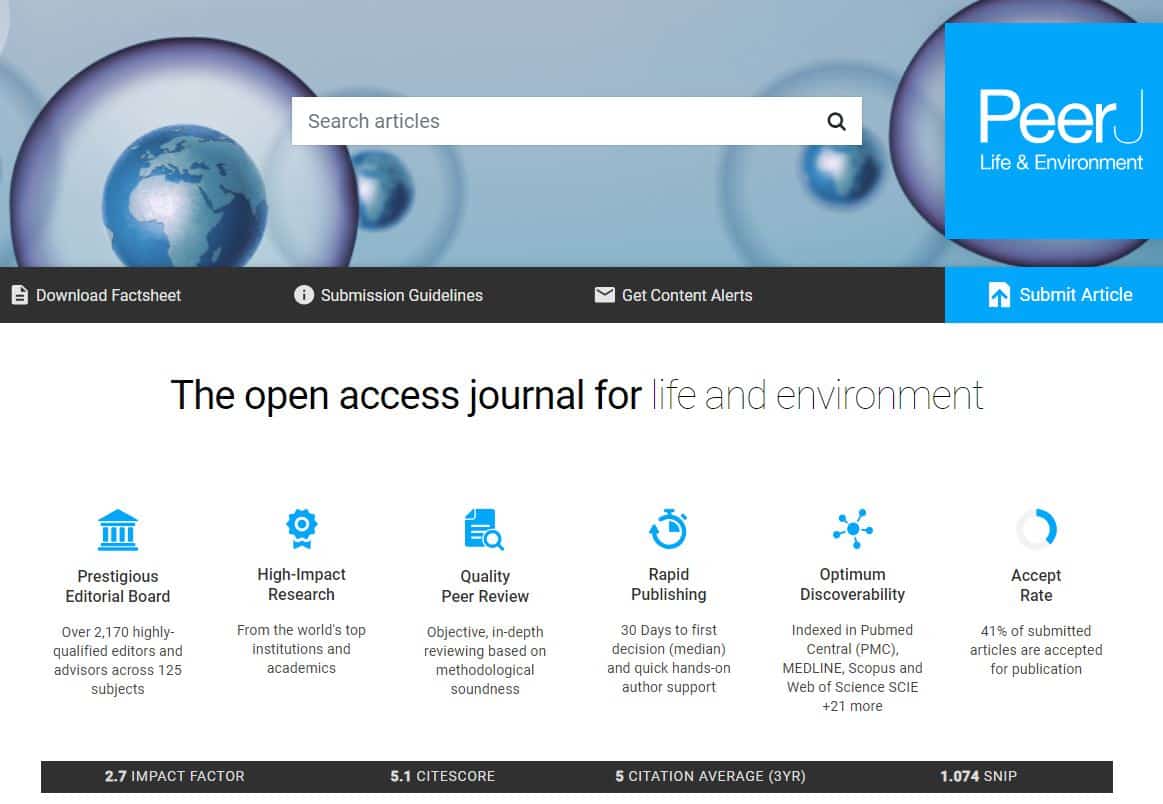
Stress-induced changes in cognitive function and intestinal barrier integrity can be ameliorated by venlafaxine and synbiotic supplementations (2024)
Title : Stress-induced changes in cognitive function and intestinal barrier integrity can be ameliorated by venlafaxine and synbiotic supplementations
Researcher : Sarawut Lapmanee, Nattapon Supkamonseni, Sakkarin Bhubhanil, Nattakan Treesaksrisakul, Chaiyos Sirithanakorn, Mattaka Khongkow, Katawut Namdee, Piyaporn Surinlert, Chittipong Tipbunjong and Prapimpun Wongchitrat
Department : Faculty of Medicine, Siam University, Bangkok, Thailand
E-mail : sarawut.lap@siam.ed
Link to article : PeerJ, 2024, 12, e17033. https://doi.org/10.7717/peerj.17033
Citation : Lapmanee, S., Supkamonseni, N., Bhubhanil, S., Treesaksrisakul, N., Sirithanakorn, C., Khongkow, M., Namdee, K., Surinlert, P., Tipbunjong, C., Wongchitrat, P. (2024). Stress-induced changes in cognitive function and intestinal barrier integrity can be ameliorated by venlafaxine and synbiotic supplementations. PeerJ, 12, e17033. https://doi.org/10.7717/peerj.17033
Journal : PeerJ / in Scopus
ฐานข้อมูลงานวิจัย มหาวิทยาลัยสยาม : https://e-research.siam.edu/kb/stress-induced-change/
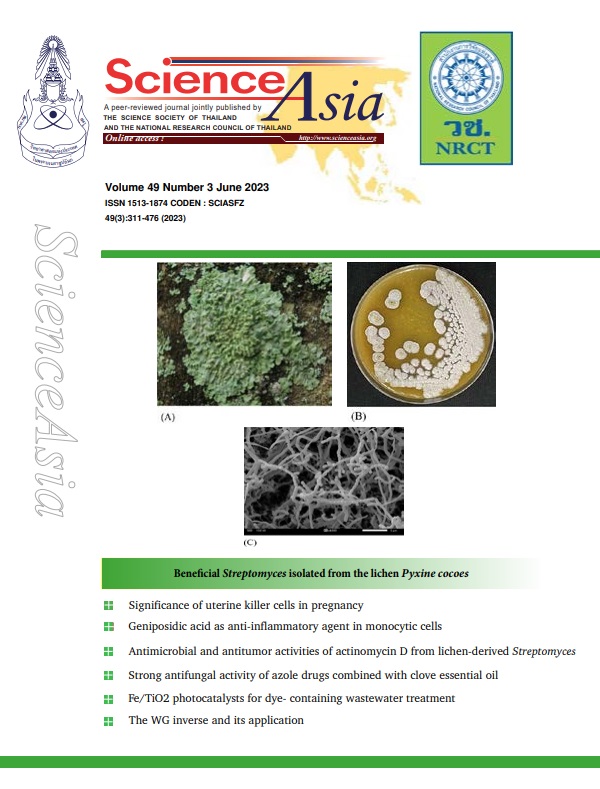
Study of Streptococcus pneumoniae serotype 19A blood isolates from Thailand by enterobacterial repetitive intergenic consensus (ERIC)-PCR typing (2023)
Title : Study of Streptococcus pneumoniae serotype 19A blood isolates from Thailand by enterobacterial repetitive intergenic consensus (ERIC)-PCR typing (SCOPUS)
Researcher : Thitiya Yungyuena, Piriyaporn Chongtrakoola, Wanatpreeya Phongsamartb, Unchalee Puangprasarta, Chalermsri Pummangurac, Dararat Samretwitc, Somporn Srifuengfung
Link to article: ScienceAsia , Volume 49, Issue 3, pages 485-490. https://doi.org/10.2306/scienceasia1513-1874.2023.038
Journal : ScienceAsia / in Scopus
Citation : Yungyuena T., Chongtrakoola P., Phongsamartb W., Puangprasarta U., Pummangurac C., Samretwit D., & Srifuengfung S.. (2023). Study of streptococcus pneumoniae serotype 19A blood isolates from Thailand by enterobacterial repetitive intergenic consensus (ERIC)-PCR typing. ScienceAsia, 49(3), 485-900. https://doi.org/10.2306/scienceasia1513-1874.2023.038
ฐานข้อมูลงานวิจัย มหาวิทยาลัยสยาม : https://e-research.siam.edu/kb/study-of-streptococcus-pneumoniae/
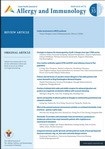
Successful haploidentical hematopoietic stem cell transplantation with post-transplant cyclophosphamide in a child with X-linked chronic granulomatous disease: A first report in Asia (2019)
Title : Successful haploidentical hematopoietic stem cell transplantation with post-transplant cyclophosphamide in a child with X-linked chronic granulomatous disease: A first report in Asia
Researcher : Clin.Prof.Suwat Benjaponpitak
Department : Faculty of Medicine, Siam University, Bangkok, Thailand
E-mail : med@siam.edu
Abstract : Backgound: HLA-matched hematopoietic stem cell transplantation (HSCT) is the curative treatment for chronic granulomatous disease (CGD).
Objective: To report a case of X-linked CGD with active infection successfully treated by haploidentical HSCT with post-transplant high dose cyclophosphamide (PTCY).
Methods: A 5-year-old Thai boy with CGD was undergone for haploidentical HSCT using PTCY with correction of the phagocytic function. He presented with Chromobacterium violaceum liver abscess at the age of 9 months and experienced recurrent perianal abscess and invasive pulmonary aspergillosis even receiving antimicrobial prophylaxis. PTCY was given on day 3 and 4, after CD34+ cells infusion.
Results: The peripheral blood-nucleated cell chimerism showed 100% on day 16 and remained 100%. Dihydrorhodamine (DHR) assay on day 108 and day 214 showed normal results. Currently at 22 months post HSCT, he does not receive antibiotic and anti-fungal prophylaxis.
Conclusions: Haploidentical HSCT with PTCY could be an effective treatment option for children with CGD.
Key words: Haploidentical transplantation, Hematopoietic stem cell transplantation. Chronic granulomatous disease, Cyclophosphamide, Graft-Versus-Host Disease
Link to Academic article: DOI: 10.12932/AP-290419-0551
Journal : Asian Pacific journal of allergy and immunology
Bibliography : Janjindamai, C., Manuyakorn, W., Anurathapan, U., Pakakasama, S., Wattanasirichaigoon, D., Kamchaisatian, W., Benjaponpitak, S., & Hongeng, S. (2019, November 3). Successful haploidentical hematopoietic stem cell transplantation with post-transplant cyclophosphamide in a child with X-linked chronic granulomatous disease: A first report in Asia. Asian Pac J Allergy Immunol, doi: 10.12932/AP-290419-0551. Epub ahead of print. PMID: 31677618.

Successful haploidentical hematopoietic stem cell transplantation with post-transplant cyclophosphamide in a child with X-linked chronic granulomatous disease: A first report in Asia (2022)
Title : Successful haploidentical hematopoietic stem cell transplantation with post-transplant cyclophosphamide in a child with X-linked chronic granulomatous disease: A first report in Asia
Researcher : Chawisa Janjindamai , Wiparat Manuyakorn, Usanarat Anurathapan, Samart Pakakasama, Duangrurdee Wattanasirichaigoon, Wasu Kamchaisatian, Suwat Benjaponpitak, Suradej Hongeng
Department : Faculty of Medicine, Siam University, Bangkok, Thailand
E-mail : med@siam.edu
Abstract : Background: HLA-matched hematopoietic stem cell transplantation (HSCT) is the curative treatment for chronic granulomatous disease (CGD).
Objective: To report a case of X-linked CGD with active infection successfully treated by haploidentical HSCT with post-transplant high dose cyclophosphamide (PTCY).
Methods: A 5-year-old Thai boy with CGD was undergone for haploidentical HSCT using PTCY with correction of the phagocytic function. He presented with Chromobacterium violaceum liver abscess at the age of 9 months and experienced recurrent perianal abscess and invasive pulmonary aspergillosis even receiving antimicrobial prophylaxis. PTCY was given on day 3 and 4, after CD34+ cells infusion.
Results: The peripheral blood-nucleated cell chimerism showed 100% on day 16 and remained 100%. Dihydrorhodamine (DHR) assay on day 108 and day 214 showed normal results. Currently at 22 months post HSCT, he does not receive antibiotic and anti-fungal prophylaxis.
Conclusions: Haploidentical HSCT with PTCY could be an effective treatment option for children with CGD.
Link to article: Asian Pacific Journal of Allergy and Immunology, 2022, 40(3), pp. 278–282. https://doi.org/10.12932/ap-290419-0551
Journal : Asian Pacific journal of allergy and immunology / in Scopus
Citation : Janjindamai, C., Manuyakorn, W., Anurathapan, U., Pakakasama, S.,Wattanasirichaigoon, D., Kamchaisatian, W., Benjaponpitak, S. & Hongeng, S. (2022). Successful haploidentical hematopoietic stem cell transplantation with post-transplant cyclophosphamide in a child with X-linked chronic granulomatous disease: A first report in Asia. Asian Pac J Allergy Immunol, 40(3), 278–282. https://doi.org/10.12932/ap-290419-0551
ฐานข้อมูลงานวิจัย มหาวิทยาลัยสยาม : –
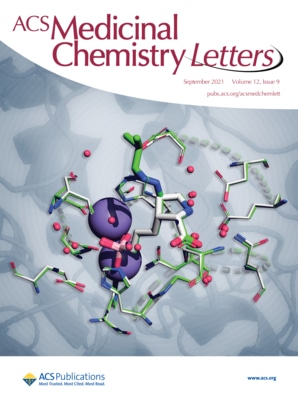
Synthesis of Benzoazepine Derivatives via Azide Rearrangement and Evaluation of Their Antianxiety Activities (2021)
Title : Synthesis of Benzoazepine Derivatives via Azide Rearrangement and Evaluation of Their Antianxiety Activities
Researcher : Onrapak Reamtong, Sarawut Lapmanee, Jumreang Tummatorn, Nitwaree Palavong, Charnsak Thongsornkleeb, and Somsak Ruchirawat
Department : Faculty of Medicine, Siam University, Bangkok, Thailand
E-mail : sarawut.lap@siam.ed
Link to article : ACS Medicinal Chemistry Letters, 2021, 12(9), 1449–1458. https://doi.org/10.1021/acsmedchemlett.1c00275
Citation : Reamtong, O., Lapmanee, S., Tummatorn, J., Palavong, N., Thongsornkleeb, C., & Ruchirawat, S. (2021). Synthesis of Benzoazepine Derivatives via Azide Rearrangement and Evaluation of Their Antianxiety Activities. ACS Medicinal Chemistry Letters, 12(9), 1449–1458. https://doi.org/10.1021/acsmedchemlett.1c00275
Journal : ACS Medicinal Chemistry Letters / in Scopus
ฐานข้อมูลงานวิจัย มหาวิทยาลัยสยาม : –
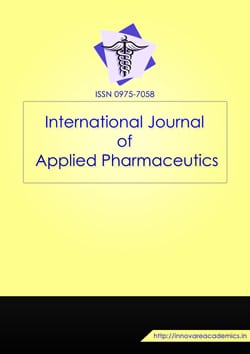
Synthesis of carboxymethyl cellulose from rice husk (2021)
Title : Synthesis of carboxymethyl cellulose from rice husk
Researcher : Jarmkom, K., Khobjai, W., Teachaoei, S., Shuwisitkul, D.
Department :
Abstract : Objective: The purpose of this research was to produce carboxymethyl cellulose from rice husk (CMCRH) and used it as a raw material in food or health products.
Methods: Cellulose was extracted from husk rice and converted to CMC (CMCRH) using sodium hydroxide (NaOH) and monochloroacetic acid in isopropanol (C3H8O).
Results: CMCRH was characterized for chemical composition and morphology by scanning electron microscopy. Microscopy analysis showed that chemical composition changes with increasing sodium content (Na-). Likewise, morphology has changed. Physicochemical and viscosity tests showed that were similar properties compare with commercial CMC.
Conclusion: CMC is derived cellulose that is used in products for various applications. RH is an agricultural waste that is carried out to synthesize CMC (CMCRH). Finally, CMCRH has the potential to be used in raw materials in food or health products which biodegradable material.
Keywords: Cellulose, Carboxymethyl cellulose, Rice husk
Link to Academic article: DOI: https://doi.org/10.22159/ijap.2021.v13s1.Y0104
Journal : International Journal of Applied Pharmaceuticsthis, 2021, 13(Special issue 1)
Bibliography : Jarmkom, K., Khobjai, W., Teachaoei, S., & Shuwisitkul, D. (2021). Synthesis of carboxymethyl cellulose from rice husk. International Journal of Applied Pharmaceuticsthis, 13(Special Issue 1), 50–54. Retrieved from https://doi.org/10.22159/ijap.2021.v13s1.Y0104
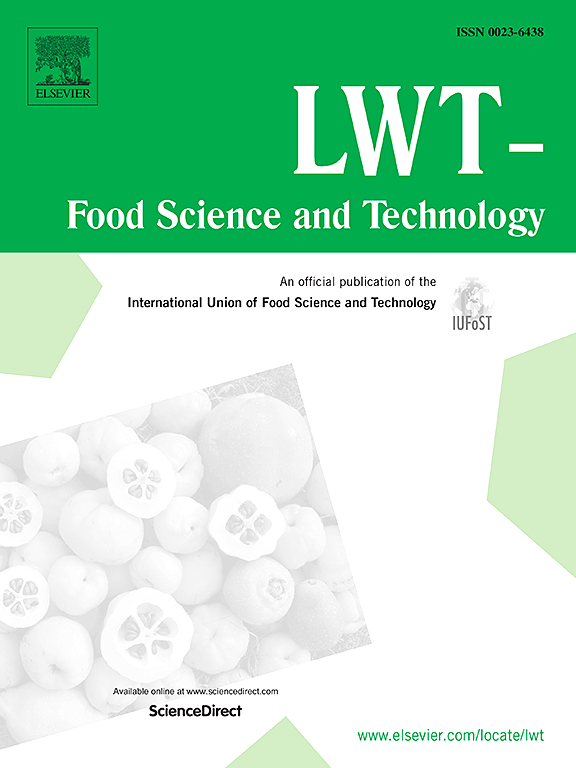
Synthesis of soluble calcium compound from skipjack tuna bones using edible weak acids (2022)
Title : Synthesis of soluble calcium compound from skipjack tuna bones using edible weak acids
Researcher : Chakkapat Aenglong, Yu-Ming Wang, Maruj Limpawattana, Wanida Sukketsiri, Qing-Juan Tang, Wanwimol Klaypradit, Soraya Kerdpiboon
Department : สำนักอธิการบดี มหาวิทยาลัยสยาม
E-mail : maruj.lim@siam.edu
ฐานข้อมูลงานวิจัย มหาวิทยาลัยสยาม : –
Link to article: LWT, 2022, 162, 113460. https://doi.org/10.1016/j.lwt.2022.113460
Journal : LWT / in Scopus
Bibliography : Aenglong, C., Wang, Y. M., Limpawattana, M., Sukketsiri, W., Tang, Q. J.,Klaypradit, W., & Kerdpiboon, S. (2022). Synthesis of soluble calcium compound from skipjack tuna bones using edible weak acids. LWT, 162, 113460. https://doi.org/10.1016/j.lwt.2022.113460
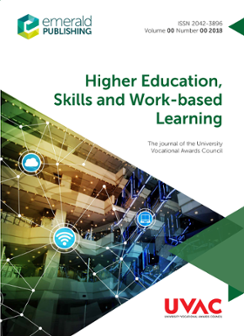
Thailand’s dual education system: A way forward (2017)
Title : Thailand’s dual education system: A way forward
Researcher : รศ.ดร. จอมพงศ์ มงคลวนิช Jomphong Mongkhonvanit
Department : รองศาสตราจารย์ประจำสาขาวิชาการบริหารหารศึกษา บัณฑิตวิทยาลัยศึกษาศาสตร์ มหาวิทยาลัยสยาม กรุงเทพมหานคร 10160
E-mail :
ฐานข้อมูลงานวิจัย มหาวิทยาลัยสยาม : –
Link to article: Higher Education, Skills and Work-based Learning, 2017, 7(2), pp. 155–167. https://doi.org/10.1108/HESWBL-09-2016-0067
Publication: Higher Education, Skills and Work-based Learning / in Scopus
Bibliography : Mongkhonvanit, J. (2017), “Thailand’s dual education system: a way forward”, Higher Education, Skills and Work-Based Learning, 7(2), 155-167. https://doi.org/10.1108/HESWBL-09-2016-0067

The analgesic efficacy of anterior femoral cutaneous nerve block in combination with femoral triangle block in total knee arthroplasty: a randomized controlled trial(2021)
Title : The analgesic efficacy of anterior femoral cutaneous nerve block in combination with femoral triangle block in total knee arthroplasty: a randomized controlled trial
Researcher : Kampitak, W., Tanavalee, A., Tansatit, T., …Songborassamee, N., Vichainarong, C.
Abstract : Background: Ultrasound-guided femoral triangle block (FTB) can provide motor-sparing anterior knee analgesia. However, it may not completely anesthetize the anterior femoral cutaneous nerve (AFCN). We hypothesized that an AFCN block (AFCNB) in combination with an FTB would decrease pain during movement in the immediate 12 h postoperative period compared with an FTB alone.
Methods: Eighty patients scheduled to undergo total knee arthroplasty were randomized to receive either FTB alone (FTB group) or AFCNB with FTB (AFCNB + FTB group) as part of the multimodal analgesic regimen. The primary outcome was pain during movement at 12 h postoperatively. Secondary outcomes included numeric rating scale (NRS) pain scores, incidence of surgical incision site pain, intravenous morphine consumption, immediate functional performance, patient satisfaction, and length of hospital stay.
Results: The NRS pain scores on movement 12 h postoperatively were significantly lower in the AFCNB + FTB group than in the FTB group (mean difference: –2.02, 95% CI: –3.14, –0.89, P < 0.001). The incidence of pain at the surgical incision site at 24 h postoperatively and morphine consumption within 48 h postoperatively were significantly lower (P < 0.001), and quadriceps muscle strength at 0° immediately after surgery was significantly greater in the AFCNB + FTB group (P = 0.04).
Conclusions: The addition of ultrasound-guided AFCNB to FTB provided more effective analgesia and decreased opioid requirement compared to FTB alone after total knee arthroplasty and may enhance immediate functional performance on the day of surgery.
Keywords: Arthroplasty; Knee; Nerve block; Peripheral nerves; Postoperative pain; Ultrasonography.
Link to Academic article: DOI: https://doi.org/10.4097/kja.21120
Journal : Korean Journal of Anesthesiology, 2021, 74(6).
Bibliography : Kampitak, W., Tanavalee, A., Tansatit, T., Ngarmukos, S., Songborassamee, N., & Vichainarong, C. (2021). The analgesic efficacy of anterior femoral cutaneous nerve block in combination with femoral triangle block in total knee arthroplasty: a randomized controlled trial. Korean Journal of Anesthesiology, 74(6), 496–505. DOI: https://doi.org/10.4097/kja.21120

The crest injection technique for glabellar line correction and the paracentral artery (2021)
Title : The crest injection technique for glabellar line correction and the paracentral artery
Researcher : Tansatit, T., Uruwan, S., Rungsawang, C.
Abstract : The glabella is a zone that carries a high risk of blindness after performing filler injections. The arteries beneath the glabellar lines were investigated by meticulous dissections in 30 geriatric embalmed cadavers with latex injections into the arterial system. The results showed that the supratrochlear artery, a direct branch of the ophthalmic artery, ascended from the muscular layer of the medial eyebrow along the medial canthal vertical line of the intercanthal vertical zone (53 in 60 hemifaces, or 88%). The dominant single paracentral artery from the radix artery was found within the radix vertical zone (eight out of 30 glabellae, or 27%). Among these, the dominant paracentral artery was near the midline in two cadavers and arose along the radix vertical line in six cadavers. The dominant paracentral artery may be the cause of ocular complications during injections of glabellar lines between the medial eyebrows, especially at the radix vertical lines. The supratrochlear artery might cause ocular complications when an injection is performed close to the medial eyebrows. Pinching to create a skin crest and evert glabellar line for a precise injection is recommended to temporarily occlude the paracentral artery.
Link to Academic article: DOI: 10.1097/GOX.0000000000003982
Journal : Plastic and Reconstructive Surgery – Global Open, 2021, 9(12).
Bibliography : Tansatit, T., Uruwan, S. & Rungsawang, C.,(2021). The crest injection technique for glabellar line correction and the paracentral artery. Plastic and Reconstructive Surgery – Global Open, 9(12), e3982. DOI: 10.1097/GOX.0000000000003982